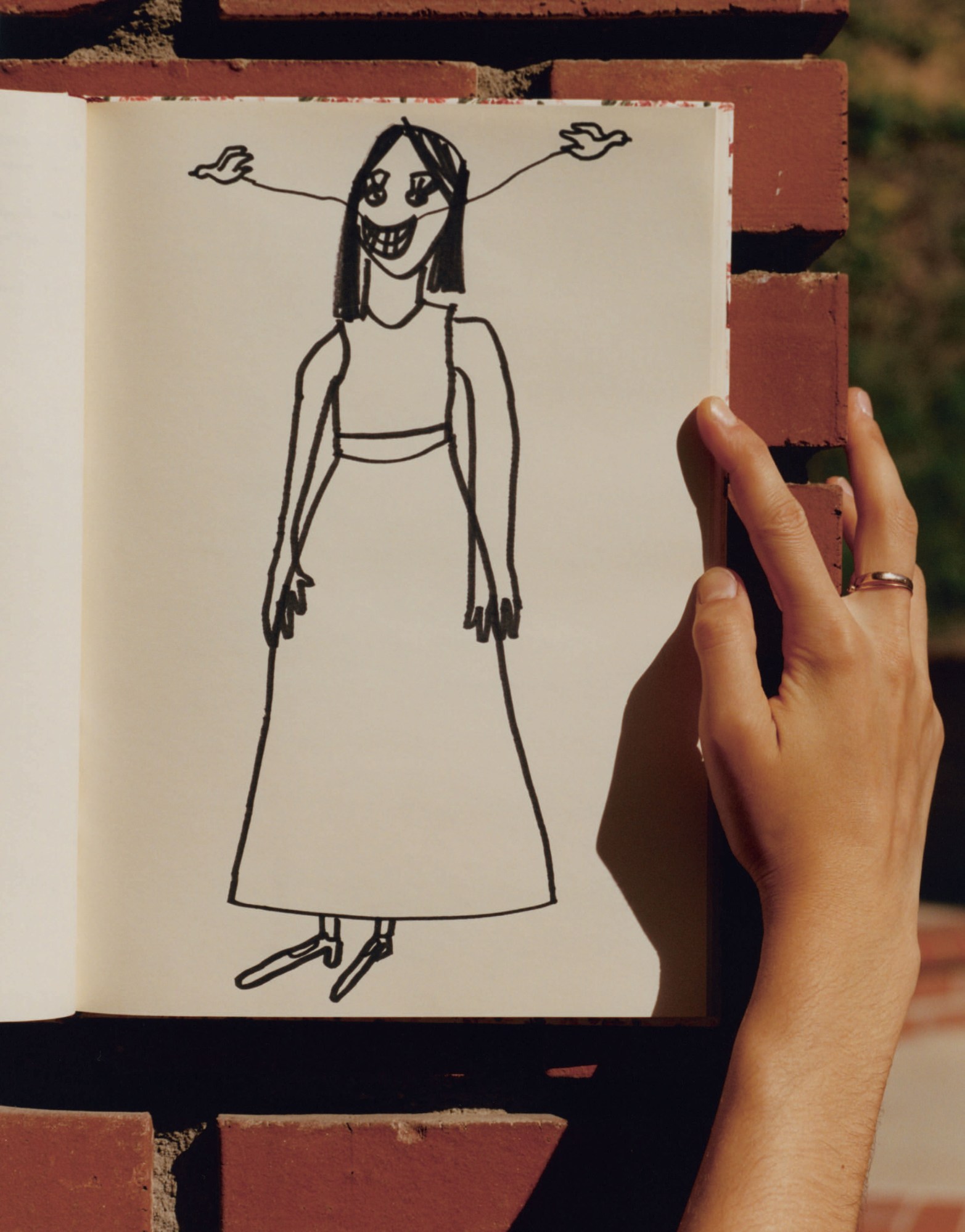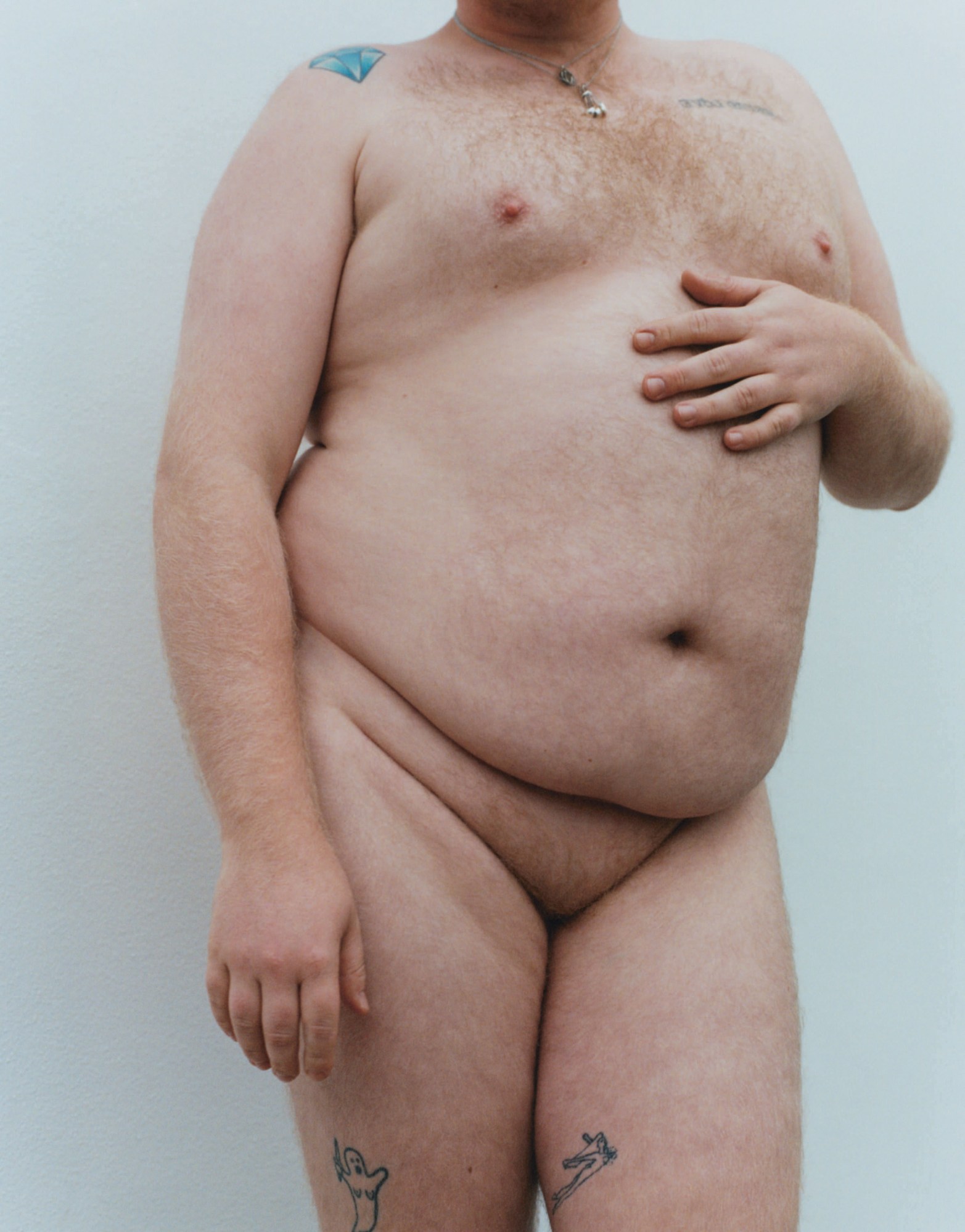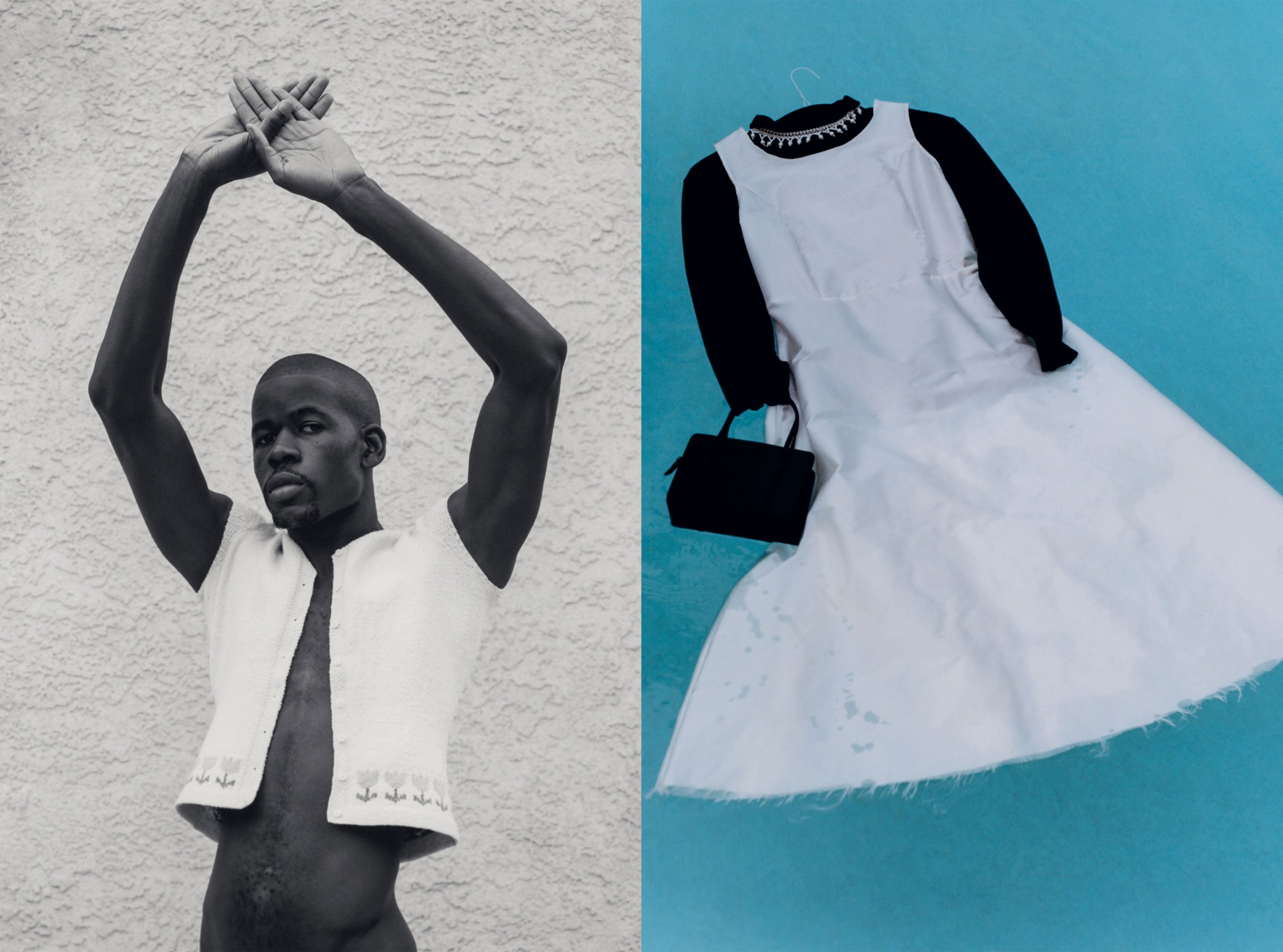Tired of seeing independent designers struggle to build a sustainable career, 1 Granary launched VOID, where young talent is connected to established creative teams. Now at its second edition, the project resulted in an exhibition during London Fashion Week and a series of unique zines, collected in one publication . We spoke to the six VOID designers about their work, the power of collaboration and their hopes for the future.
There is nothing more beautiful, and more complex, than a human being. That is how Gabriele Skucas sees the world, and how she designs her clothes. The Lithuanian-born designer communicates through simplicity and silence: “A girl already comes with so many complexities, I don’t need to add to more,” she explains. Clothes are a way to soothe inner struggles, as is her painstakingly slow creation process: crochet. Gabriele was first taught the technique by her mother, and has been figuratively hooked ever since. Both the slow, meditation-like process and the clean, innocent result allow her to explore and express the poignant topics at the heart of her work: transition and loss.
It wasn’t difficult for Gabriele’s VOID team ‒ made up off creative directors Jean-Baptiste Talbourdet and Lolita Jacobs and photographer Thurstan Redding ‒ to relate to the topic. They wanted to use shocking imagery to express the angst, discomfort and transition central to Gabriele’s work…

You mainly work with labour-intensive manual techniques, like crochet and knit. Could you explain what the technique means to your practice?
I learned to crochet from my mum as a teen, and use it as a main practice in my work. It is true that I love the texture and textile that comes from repeating a single stitch, but mainly, I think I like crochet because I am so cripplingly used to it. It is my security blanket, and a “cute story” that I love the technique. My work has to do with hidden agendas and storytelling about girls who are different than they appear. The main character often being myself. You don’t suspect a girl with her head down, crocheting, to be a crazy girl. I like the irony of me, a modern-day designer with all opportunities at the tips of my fingers, still sticking with an ancient and boring technique. It’s so anti-modern and anti “cool.” I am not cool, and neither is my technique. I prefer it that way.
Your designs are minimal and pure, yet the ideas that inspire them – growing pains, childhood memories, sadness – are everything but. How do these contrasting elements intersect?
As I mentioned before, I understand my main line of work is to dress a woman. I like to look at my friends, my mum, myself. How does a normal, struggling, beautiful human wear garments? It is fascinating, the stunning subtleties you will find if you just look close at “normal,” “non-designer” clothing. I find endless inspiration from a young woman crossing the street, wearing a wool, black, knee-length, A-line skirt and matronly blouse. Who are you, sweet girl? What do you think about in your silent moments? What worries you, what excites you? I zoom in as close as I can to myself and my thoughts and although that may appear very minimal and easy, it is anything but. I often feel, even though I am wearing a very plain outfit, that I am a character in my own movie, wearing a costume. The more “innocent looking” the outfit, for example, a mid-calf knit skirt and matching sweet cardigan, the bigger the lie that I am living. But I love that juxtaposition and theatrical element of being a designer.
Was it difficult to explain your world to the creative team? How did they relate to these topics?
It was very easy to explain myself to Jean-Baptiste and Thurstan. They immediately understood me, and my world happened to be very similar to each of their worlds. I think because the subject was myself, and my discomfort with the world around me, they could relate to some small degree.

How did you decide on the casting of Sasha de Sade?
Thurstan cast Sasha de Sade after having a conversation with Jean-Baptiste about having striking images which, at one glance, told the story we were telling. Sasha’s body of work as a porn star, or even her Instagram, will reveal she is very sexy and very provocative. She is incredibly comfortable in her beautiful body, as it appears by looking at the images she chooses to post. Dressing her up in my heavy white knit skirt and black blouse, seemed like a wonderful lie. She prefers not to be in them. She seems more comfortable in the nude, in her own flesh. My garments feel like an uncomfortable jail on her. I love this. By looking at her on the street, in my sweet girl knit skirt, how could you ever guess what lies in her mind? My designs are props of a bigger lie. A lie I sometimes feel I am living ‒ that I am comfortable, that I am always happy, that I am confident. My sweet, plain designs help me lie very well.
The images featured in the publication are more explicitly sexual and provocative than your personal work. What do you think about the way this aspect of your work is translated?
I think each project brings something that wasn’t there before. This collaboration, that was so generously offered to me by 1 Granary, has helped to strongly reiterate the importance of working with other creatives. All it took was a few conversations with Jean-Baptiste and Thurstan for them to hear about my world. They took my garments and explained them clearer than I ever could, explained OUR world to viewers. It shocked me to see my work amongst sex, and nudity. And it woke me up to see a world which I don’t think I’m tapping into. It inspired me to be a clearer and stronger designer and to be worthy of how Thurstan interpreted it.
Has the collaboration changed your perception of your own work and where you want to go?Absolutely, I want to make stronger, clearer statements as a designer of woman’s clothing. I want to be silent yet severe in my designs.
As an independent designer working on a small-scale, where do you see yourself fit into this industry?
I don’t look at it from an angle of fitting into the industry. I think I have people interested in my work. What I want, and am working towards is a platform to showcase my work, so more people can see it… because I think many will understand and relate to it.
